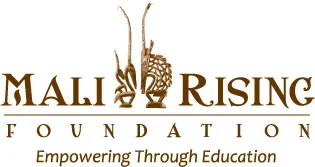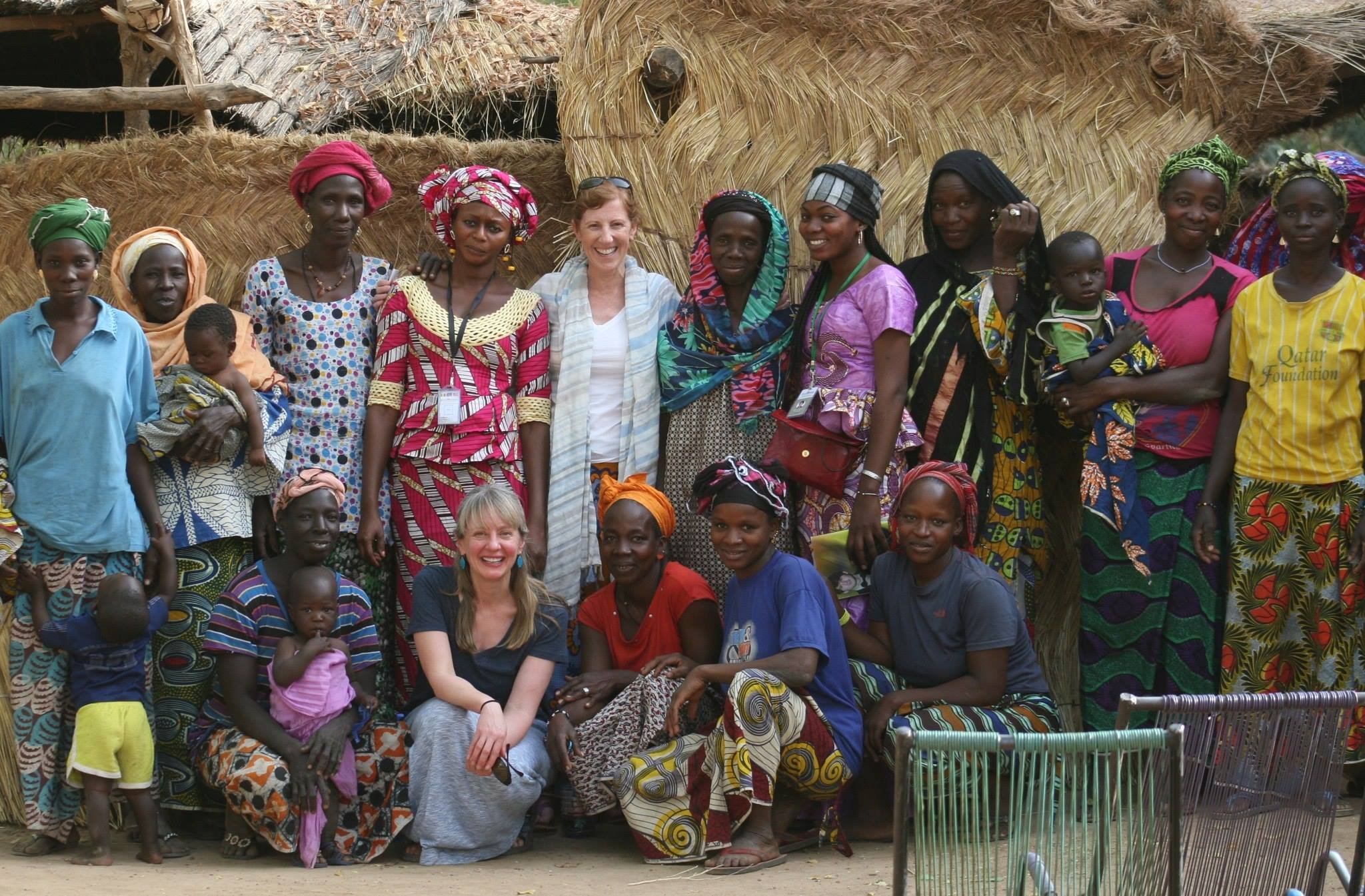Teachers and principals really set the tone for a school. That’s one of the reasons I love working with our teachers and principals — good leadership in the classrooms and the school overall means the kids can really learn and grow in our schools. That’s why I’m sad when we sometimes have to say goodbye to good principals, like principal Make Ezai Mounkoro of Sue Chung Chiu Middle School.We will miss Mr. Mounkoro and his steady leadership. But, when his replacement arrives in the village this fall we will be just as ready to help the new principal as we were to support Mr. Mounkoro. Anything for our students!
Textbooks: Tools We Take for Granted
As one of my former professors —Pr Ibrahim Sagayar — said: “A teacher or a student without a textbook is like a soldier on the battlefield without a weapon”. Yet all too often in Mali, teachers and students are not armed with textbooks. I recently discussed this problem with two of our partner principals — the principal of Sue Chung Chiu Middle School of Simidji, Mr. Essai Mikoro and the principal of Little Heroes Academy I Middle School of Mana, Mlle. Djenebou Niama Coulibaly.
Friday Fun Facts About Mali
By Merritt Frey, Executive Director
I recently had my 7 year anniversary as the Executive Director of Mali Rising…it is hard to believe! The anniversary has me thinking about how much I’ve learned over those years and how much I’ve grown to respect the people of Mali and love the culture of the country. On this cold Friday morning when I feel so far away from the warmth of the climate and people, I thought I’d share a few fun Mali facts to help you know the country a little better too.
This great picture is the perfect reminder of my first trip to Mali in 2016. This is the women of Simidji - home to Mali Rising’s Sue Chung Chui Middle School, Mali Rising staff member Hindaty, board member Jill, and me (bottom left/center).
FACT #1
Mali’s name comes from the Bambara word for hippopotamus, which can be found in the Niger River that winds its way through the country. As a side note, the name of Mali’s capital, Bamako, comes from the Bambara word meaning "place of crocodiles" or in some interpretations “the tail of the crocodile.”
FACT #2
Although today Mali is one of the poorest countries in the world, it used to be one of the very richest. Its great wealth was built on trading of salt and gold and the country was a center of scholarship and learning. (https://www.worldatlas.com/articles/10-interesting-facts-about-mali.html)
FACT #3
The prime meridian passes through the city of Gao in Mali. This means you can stand with one foot in each hemisphere if you visit Gao! (https://www.onhisowntrip.com/most-interesting-facts-about-mali/)
FACT #4
Mali achieved independence from France (which colonized much of West Africa) in 1960. This makes Mali quite a new democracy, and the legacy of colonization continues to cause issues today.
FACT #5
Mali’s economy is largely based on agriculture, with cotton being the primary export crop. Approximately 80% of the population is involved in farming or fishing as their main livelihood. Gold mining also contributes a significant amount to the country’s exports. Together, gold and cotton make up approximately 80% of the country’s exports. (http://justfunfacts.com/interesting-facts-about-mali/ and https://www.economy.com/mali/indicators).
Every country and every place has a complicated history and context. It has been a pleasure to have the chance to learn a little bit about Mali each year and to have my understanding of the place and people grow at the same time. It is such a good reminder to always be curious about how we are all the same and how we are all different!
Inspired by what you’ve read? Donate to Mali Rising to be part of keeping this work going!
I passed my graduation exam thanks to the Girls' Project!
One Girl Leader Steps Into Her Power
As part of our Girls Project, after three years of work in a village, we train local Girl Leaders to take over leadership of the Project. This allows us to offer leadership training and real-world experience to some amazing young women and to make the Project more sustainable by making the leadership more local. Girl Leaders serve for one year, and we offer them three multi-day trainings throughout their year of service. In this blog post, Hindaty tells the story of one Girl Leader as she attended her second training with us.
Travelogue: Day 7 -- A Trip to the Market, and to Two schools
Day 7 of traveling was a very full Friday indeed. In the morning, we visited the Sue Taylor Middle School of Diorila, which is about one and a half hours down a bumpy dirt road. We returned to Ouelessebougou for lunch and a trip to the big Friday market, before zipping down the road to visit our Sue Chung Chiu Middle School in Simidiji.
Girls Project Grows & Thrives
As announced this summer, our successful Girls Project is growing! After three years of piloting the Project in three villages, as school opened this fall we launched the Project in five new villages. This expansion has allowed us to nearly DOUBLE the young women benefiting from our intensive work. With all 8 villages, this year we will work with 362 young women to help them get in school, stay in school, and thrive.
Making the Girls Project Sustainable...Meet our Girl Leaders!
We love our Girls Project, which strives to recruit more girls into school and retain them there so they have the skills to build the lives they dream off. The Project has been very successful in its initial three pilot villages. We worked in those villages in pilot mode for three years, but are now working with those villages to have them take on the Project in a sustainable way (this will allow us take the Project to five new villages!). As part of that sustainability strategy, we are developing Girl Leaders for each of the pilot villages. These young women are now high school students, but they will be working in the villages to run the Girls Groups and other Project elements. We think they will also serve as great role models for sticking with school.
Mothers' Loan Fund Means Sustainable Girls' Education
Food & Fun With the Girls Project
As part of keeping girls in school, Mali Rising’s Girls Project initiated a new activity that will allow girls to have not only theoretical knowledge but also practical knowledge. This month, our session with the girls focused on "good nutrition.” The purpose of this activity is to teach girls the different nutritious foods, the composition of a balanced breakfast, the importance of breakfast especially for teenagers, how to eat well. The aim is to give girls the love of school through the preparation of new dishes with local products. Our dish of the day was bean dumplings and vegetable salads.



